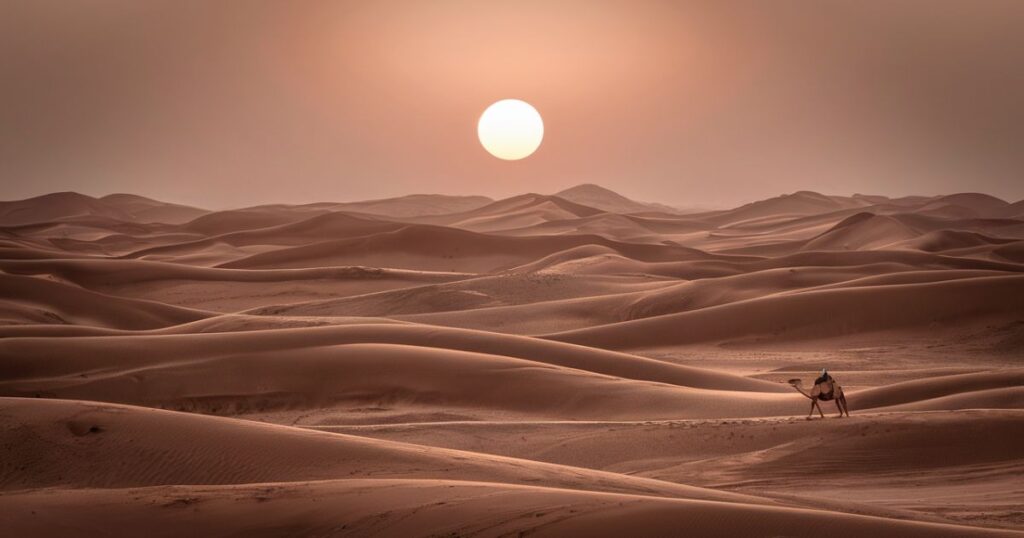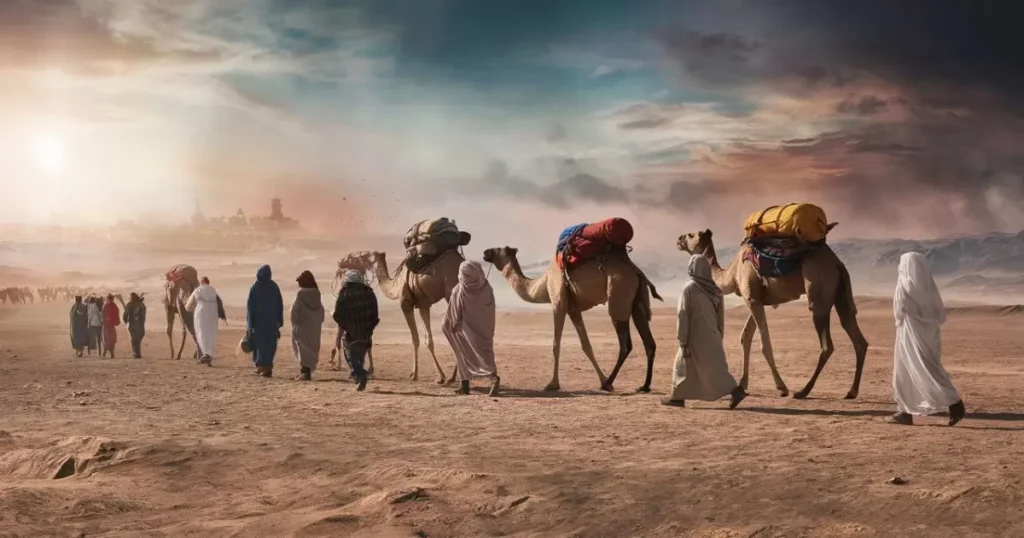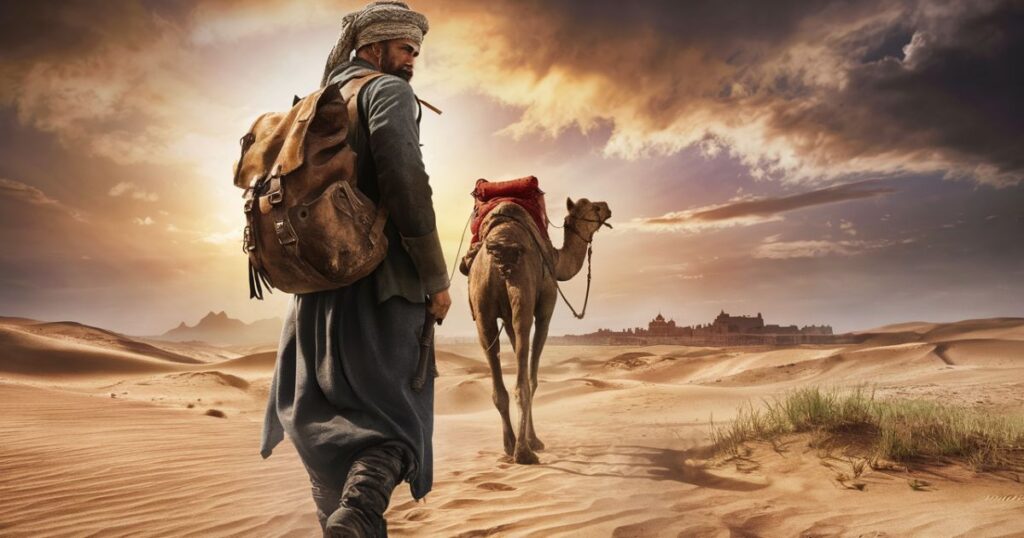The Gobi Desert, a vast expanse of arid landscape stretching across Central Asia, has long captivated the imagination of explorers, scientists, and puzzle enthusiasts alike.
As the largest desert in Asia, it’s no wonder this expansive terrain frequently appears as a clue in the New York Times crossword. Let’s embark on a journey to explore this fascinating continental feature that’s more than just a puzzle answer.
Overview of the Gobi Desert
Geographical Location
The Gobi Desert spans an impressive area across northern China and southern Mongolia. This barren region, often referred to as a vast wasteland, is actually a diverse ecosystem teeming with life. It’s bordered by the Altai Mountains and the grasslands of Mongolia to the north, making for a striking contrast between the lush Mongolian steppe and the arid zone of the Gobi.
Size and Scale
When we talk about the largest desert in Asia, we’re dealing with an immense area. The Gobi covers approximately 500,000 square miles (1,295,000 square kilometers). To put this in perspective, it’s about half the size of Alaska or roughly four times the size of Germany. This desert expanse is so vast that it’s visible from space, appearing as a massive brown patch amidst the green and blue of Earth’s surface.
Historical Significance
The Gobi’s historical importance can’t be overstated. As a crucial part of the ancient Silk Road, it played a pivotal role in connecting Eastern and Western civilizations. Caravans braved its harsh environment, crossing this arid landscape to trade goods and ideas. The desert’s vastness served as both a barrier and a bridge, shaping the cultural and economic exchanges that defined much of Asian history.
Climate and Terrain

Climate Extremes
One of the most striking features of the Gobi is its extreme temperature fluctuations. This harsh environment sees some of the most dramatic weather variations on Earth. Summer temperatures can soar to 122°F (50°C), while winter can plummet to a bone chilling -40°F (-40°C). These seasonal changes make the Gobi a challenging place for life to thrive, yet many species have adapted to these extremes.
Read Also : Long Island Utopia Guide: The Perfect Getaway Destination
Terrain Features
Contrary to popular belief, the Gobi isn’t just an endless sea of sand dunes. In fact, only about 3% of the desert is covered in sand. The rest of this expansive terrain consists of bare rock, gravel covered plains, and grasslands. The Khongoryn Els, also known as the Singing Sands, is one of the most impressive dune fields, stretching for over 100 miles (160 kilometers).
| Terrain Type | Percentage of Gobi Desert |
| Rocky Plains | 70% |
| Grasslands | 20% |
| Gravel | 7% |
| Sand Dunes | 3% |
Flora and Fauna
Vegetation
Despite its reputation as a barren region, the Gobi supports a variety of plant life adapted to its arid conditions. Hardy shrubs like the saxaul and tamarisk are common, their deep root systems allowing them to access underground water sources. In spring, parts of the desert burst into life with wildflowers, creating a stunning contrast to the usually stark landscape.
Wildlife
The Gobi’s wildlife is as resilient as it is diverse. The Bactrian camel, with its two humps, is perhaps the most iconic inhabitant. Other notable species include the Gobi bear (the only bear species adapted to desert life), the snow leopard, and various rodents like the long eared jerboa.
These animals have evolved remarkable adaptations to survive in this challenging environment, from the camel’s ability to go weeks without water to the jerboa’s oversized ears that help regulate body temperature.
Human Interaction and Impact

Nomadic Lifestyle
For centuries, nomadic peoples have called the Gobi home. These hardy individuals, primarily Mongols and Kazakhs, have developed a lifestyle perfectly attuned to the desert’s rhythms. They move with their herds of goats, sheep, and camels, seeking out the best grazing lands as the seasons change. Their traditional dwellings, known as gers or yurts, are perfectly adapted to this mobile lifestyle, providing shelter from the desert’s extremes.
Desertification and Environmental Challenges
Despite its vastness, the Gobi faces significant environmental threats. Desertification, exacerbated by climate change and human activities like overgrazing, is causing the desert to expand at an alarming rate. This expansion threatens surrounding ecosystems and communities. Efforts to combat this include the Green Wall of China, an ambitious project to plant a belt of trees along the desert’s southern edge to halt its advance.
The Gobi Desert in Popular Culture
Crossword Puzzles
The Gobi Desert has become a staple in crossword puzzles, particularly in the New York Times. Its short name and geographical significance make it an ideal answer for clues like Largest Asian desert or Mongolian expanse. For crossword enthusiasts, the Gobi is often a welcome sight, offering a quick solve in a challenging puzzle.
Cultural References
Beyond puzzles, the Gobi has left its mark on popular culture. It features in numerous books and films, often portrayed as a place of mystery and adventure. From the travels of Marco Polo to modern documentaries, the Gobi continues to capture our collective imagination, representing one of the last great wildernesses on Earth.
Ecological and Scientific Importance
Biodiversity
The Gobi’s unique conditions have given rise to a remarkable array of life forms, many found nowhere else on Earth. This biodiversity is not just scientifically fascinating but also ecologically crucial. The desert ecosystem plays a vital role in global climate patterns and supports numerous species that have adapted to its extreme conditions.
Paleontological Sites
The Gobi is a treasure trove for paleontologists. Its dry conditions have preserved fossils exceptionally well, leading to groundbreaking discoveries. The first dinosaur eggs were found here, and numerous new species have been unearthed. The desert continues to yield new insights into Earth’s prehistoric past, making it a hotspot for scientific research.
Tourism and Exploration

Tourist Attractions
For the adventurous traveler, the Gobi offers unique experiences. From the stunning Flaming Cliffs, known for their rich fossil beds, to the ancient petroglyphs at Khavtsgait, there’s no shortage of natural and historical wonders. Visitors can explore traditional nomadic camps, witness stunning sunsets over the dunes, and experience the vastness of this incredible landscape.
Adventure Tourism
The Gobi caters to thrill seekers with activities like camel trekking, dune surfing, and off road expeditions. These adventures offer a chance to experience the desert’s raw beauty up close. It’s crucial to plan such trips carefully, respecting both the fragile ecosystem and the traditional ways of life of the desert’s inhabitants.
Conclusion
The Gobi Desert, the largest desert in Asia and a favorite of NYT crossword enthusiasts, is far more than just a vast wasteland or a newspaper clue. It’s a living, breathing ecosystem with a rich history and vital importance to our planet. From its extreme climate to its unique wildlife, from ancient trade routes to modern scientific discoveries, the Gobi continues to fascinate and surprise us.
As we face global environmental challenges, understanding and preserving places like the Gobi becomes ever more crucial. Whether you’re solving a crossword puzzle or planning an adventure, remember that this expansive terrain is not just a name or a destination it’s a testament to the resilience of life and the enduring mystery of our natural world.

I am a blog writer with 3 years of experience, focusing on general topics around the world. Check out my personal blog at [magzinemini.com]. for more insights.
